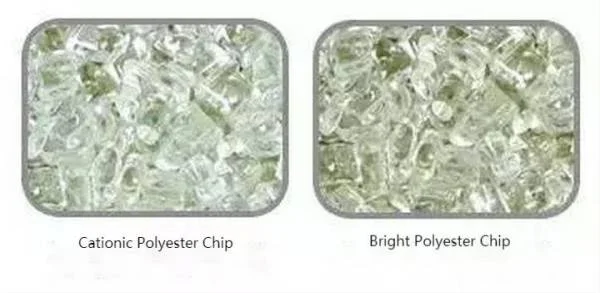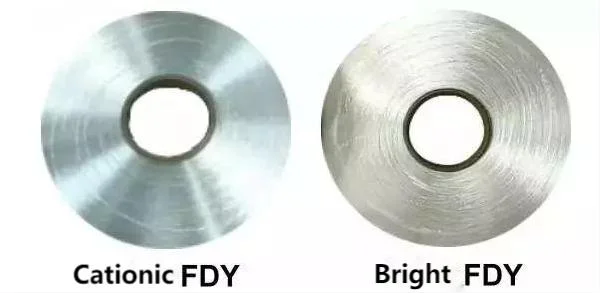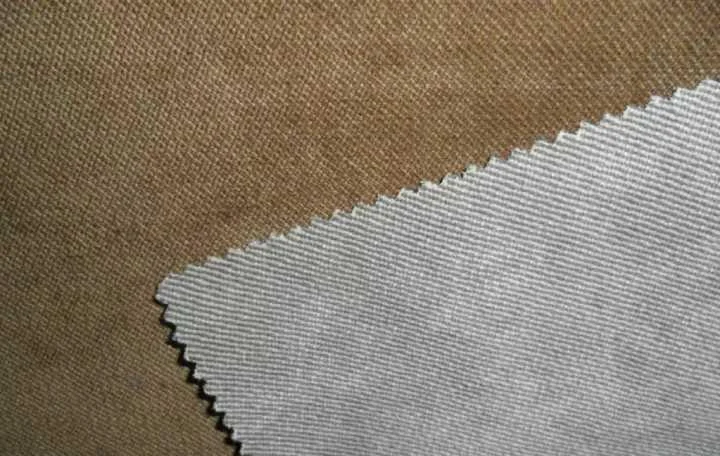Cationic polyester
Full name cationic dyeable polyester, chemical name: polybutylene terephthalate (elastic polyester); English name: cationic dyed polyester; abbreviation: PBT, which is also represented by CD in the factory. Cationic polyester belongs to denatured/modified polyester and can be dyed with cationic dyes at 110°C.
Modification method of cationic polyester
The cationic dyeable polyester modification method is to copolymerize the polyester dyeing modifier, such as dimethyl isophthalate-5-sodium sulfonate (commonly known as three monomers, English abbreviation SIPM) with polyester. Sulfonic acid groups are introduced into the polyester molecular chain after copolymerization, which can be dyed with cationic dyes. The dyed fabric has bright colors, high dye exhaustion rate, and greatly reduces the discharge of printing and dyeing wastewater. Copolyester chips can also increase antistatic, anti-pilling and moisture absorption properties. It is one of the main methods to improve polyester dyeing performance in recent years. .
Japan Unijika Co., Ltd. uses 4 parts cationic dyeable polyester with isophthalate units containing sulfonic acid groups and 1 part ethylene glycol / polyethylene glycol / Sodium sulfoisophthalate/ Block copolymers of terephthalic acid to blend spinning, which can be made into microfibers with high dye depth.
Before spinning or during spinning, add cationic active agent and a small amount of denaturant to copolymerize with BHET (hydroxyethyl terephthalate). After making it a random linear polymer, its spinnability becomes better. This modified polyester can not only be dyed with cationic dyes, but also has anti-pilling and improved shrinkage recovery.
Cationic polyester characteristics
1. The melting point of cationic polyester obtained by SIPM copolymerization is lower than that of ordinary polyester, and its crystallinity is lower than that of ordinary polyester, so that the dye molecules are easy to penetrate, the fiber is easy to dye, the color absorption rate is improved, and the hygroscopicity is also improved.
2. The molecular weight, crystallinity, and strength of cationic polyester are lower than those of ordinary polyester, and the anti-pilling properties of its fabric are better than ordinary polyester. The Young's modulus of cationic polyester is 10%~30% lower than that of ordinary polyester, so its fabric is also softer than ordinary polyester fabric.
3. In addition, compared with ordinary polyester, the alkaline hydrolysis speed of cationic polyester is much larger. Therefore, when alkali treatment is performed at the same temperature, the alkali weight loss rate of cationic polyester fabrics is much higher than that of ordinary polyester fabrics.
4. Cationic polyester not only guarantees cationic easy dyeing, but also increases the micropores of the fiber, improves the dyeing rate, air permeability and hygroscopicity of the fiber, so as to further adapt to the imitation silk of polyester fiber; through the imitation silk, the fabric can be soft Breathable, comfortable, antistatic, dyeable at normal temperature and pressure; through cationic modification of multifunctional wool-like fabric, the fabric can be soft to the touch, antistatic, anti-pilling, co-dyeing with wool at normal temperature and pressure.
Fabrics woven with cationic modified fibers have the following characteristics when dyed with cationic dyes:
1. Bright color, good deep dyeing;
2. High moisture absorption performance;
3. Good light fastness and color fastness to fading;
4. Good compatibility of dyes during color matching dyeing;
5. Good stability in high temperature dyeing bath;
6. Small contamination to other fibers including ordinary polyester fibers;
7. The diffusion rate to the inside of the fiber is fast, and there is no ring dyeing phenomenon;
8. When the pH value changes in the dye bath, the dyestuff has high stability.
There is no way to distinguish cationic modified polyester filament from polyester filament. If you want to distinguish, you can only use dyeing method! Cationic raw materials are generally dark!
The picture below shows the comparison between cationic and glossy polyester fibers, which are difficult to distinguish with the naked eye.


-Conclusion
In conclusion, hollow polyester staple fiber's good elasticity is a result of its cutting-edge technology. This type of fiber offers superior performance and durability while being light in weight, making it an ideal choice for many different applications. When combined with other innovative technologies such as multi-filament fibers and thermal bonding processes to create unique fabrics, the potential for creating new products that are both functional and stylish is endless. Embracing innovation through hollow polyester staple fiber's good elasticity allows us to explore what's possible in the world of fashion and design.
Yongbang Chemical Fiber is a source manufacturer of polyester staple fiber. Its products include solid polyester staple fiber, hollow polyester staple fiber and fake down polyester staple fiber. It has its own production base. All production equipment is independently developed and regularly upgraded. Carry out equipment maintenance and expand production capacity.


